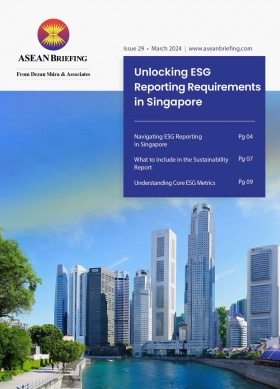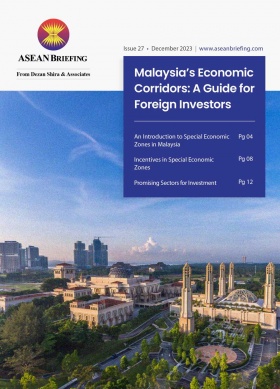Malaysia Plans New Port on Malacca Strait
Malaysia plans to build a new container port in the state of Negeri Sembilan on the western coast of the Malay Peninsula and facing the Malacca Strait.
The Strait is situated between Sumatra Island in Indonesia and the Malay Peninsula and serves as a vital maritime corridor linking the Indian and Pacific Oceans. Spanning from the Andaman Sea through the Strait of Singapore to the South China Sea, it facilitates connectivity among several of Asia’s major economies, including Japan, Taiwan, South Korea, and India.
The strait is the second busiest shipping lane in the world, carrying some 30 percent of all traded goods globally, and around 94,000 ships pass through the strait annually.
As companies look to reduce their dependence on China, Malaysia can attract more shipping traffic and logistics operations through this new port. This diversification may include rerouting shipping lanes, establishing new manufacturing bases, or setting up distribution centers in Malaysia.Utilizing artificial intelligence
The estimated US$425 million port will be the first port in Malaysia to utilize artificial intelligence.
AI plays a crucial role in modern port development, offering numerous benefits that enhance efficiency, safety, and overall operational effectiveness. Here are some key aspects highlighting the importance of AI in port development:
- Automation and Efficiency: AI enables the automation of various port operations, such as crane movements, container handling, and transportation within the port. This automation leads to faster turnaround times, increased throughput, and reduced labor costs.
- Predictive Maintenance: AI systems can predict equipment failures and maintenance needs by analyzing data from sensors and machinery. This predictive maintenance minimizes downtime, reduces repair costs, and extends the lifespan of port equipment.
- Optimized Logistics: AI algorithms can optimize the routing and scheduling of container ships, trucks, and trains, ensuring the most efficient movement of goods. This reduces congestion, lowers fuel consumption, and improves overall logistics efficiency.
- Enhanced Security: AI-powered surveillance systems and cybersecurity measures can detect and respond to threats in real-time. This enhances the security of port facilities, safeguarding against cyber-attacks, theft, and unauthorized access.
- Data-Driven Decision Making: AI can analyze vast amounts of data from various sources to provide actionable insights. Port operators can use these insights to make informed decisions, optimize resource allocation, and improve strategic planning.
- Environmental Sustainability: AI can help ports reduce their environmental impact by optimizing energy usage, managing waste, and monitoring emissions. AI-driven solutions contribute to more sustainable port operations, aligning with global environmental goals.
- Improved Customer Service: AI can enhance customer service by providing real-time tracking of shipments, automated communication, and efficient handling of customer inquiries. This improves the overall experience for port users and stakeholders.
The proposed port is expected to include a 1.8-kilometer jetty, a terminal, and a container operation area spanning approximately 809,300 square meters.
Malaysia investing in new ports to compete regionally
The Malaysian government is heavily investing in the country’s ports especially since the country is strategically located along the Malacca Strait.
Malaysia’s Port Klang, for instance, is seeking to double its capacity through a US$8.1 billion expansion from 14 million 20-foot equivalent units to 27 million over the next decades.
Neighboring countries across the Malacca Strait also have ambitious plans for their ports. In Singapore, construction is underway for what will become the world’s largest automated terminal upon the completion of Tuas Port in 2040.
Thailand has proposed an alternative solution: a US$36 billion 100km land bridge project connecting two seaports and reducing travel time by four days. This will mean bypassing the shipping lane entirely and could slash six to nine days off ship journeys.
As Southeast Asia continues to play a crucial role in global trade, these developments in port infrastructure underscore the region’s strategic importance and ongoing efforts to capitalize on its geographic advantages. With continued investment and strategic planning, Malaysia and its neighbors are poised to shape the future of maritime trade in the Asia-Pacific region.
About Us
ASEAN Briefing is produced by Dezan Shira & Associates. The firm assists foreign investors throughout Asia and maintains offices throughout ASEAN, including in Singapore, Hanoi, Ho Chi Minh City, and Da Nang in Vietnam, in addition to Jakarta, in Indonesia. We also have partner firms in Malaysia, the Philippines, and Thailand as well as our practices in China and India. Please contact us at asean@dezshira.com or visit our website at www.dezshira.com.








